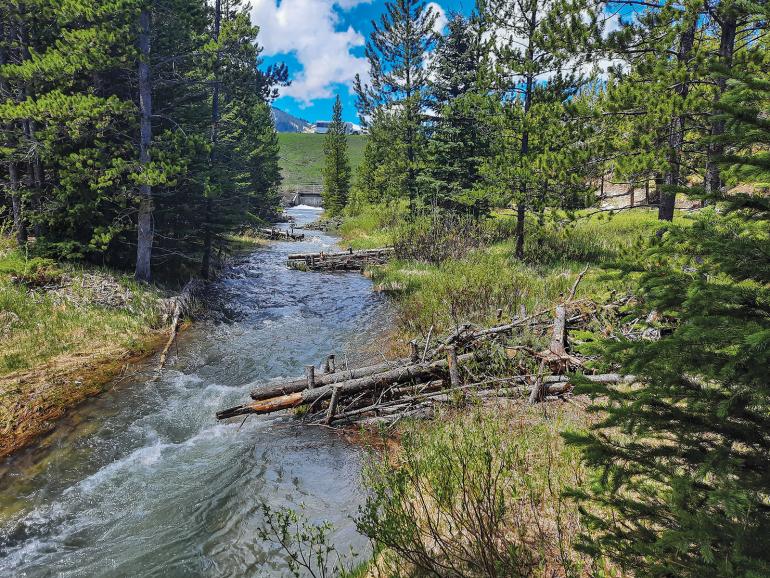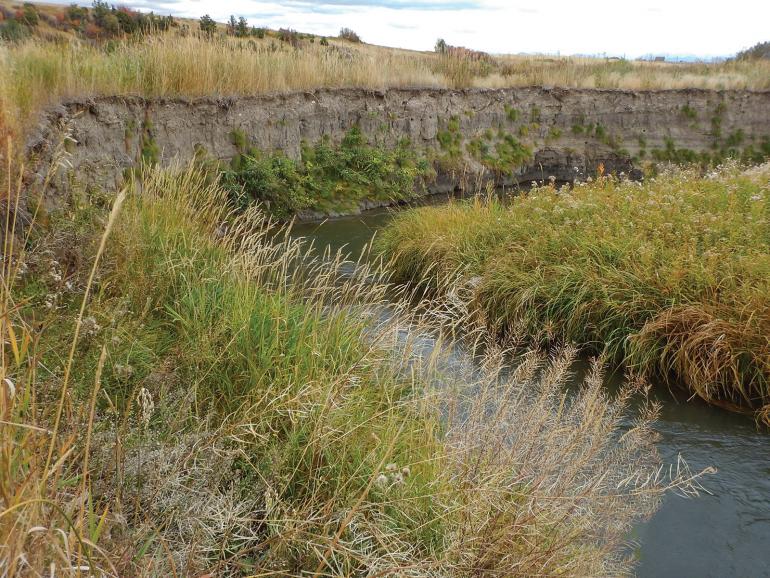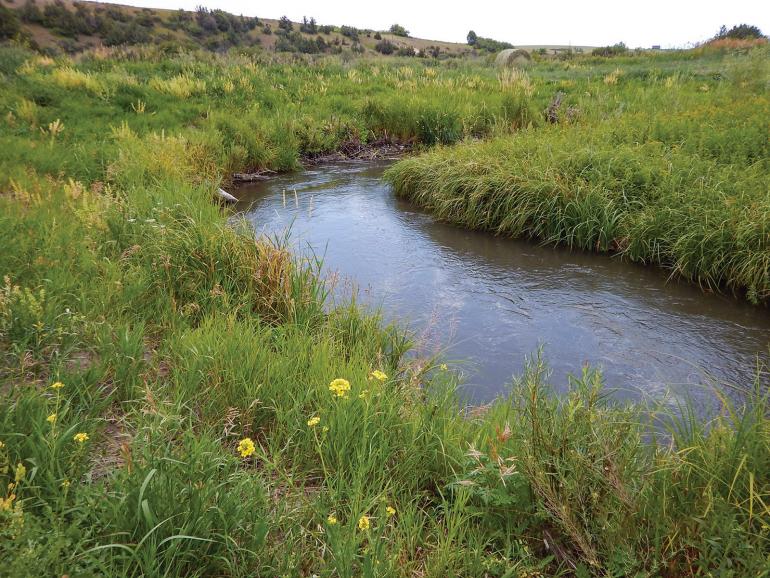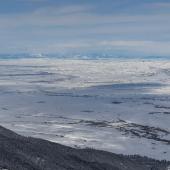Spring Cleaning
Restoring tributary streams with Trout Unlimited.
Since the formation of the inaugural Montana Chapter in 1968, Trout Unlimited (TU) has had a strong presence in southwest Montana, working to protect, conserve, and restore some of our nation’s most iconic trout streams. In the past, TU has rallied around key issues including habitat degradation, the proposed damming of the Yellowstone River near Livingston, and threats to Montana’s stream-access law. Today, in the face of unprecedented development and population growth, TU continues to build on that legacy, taking active measures to expand its reach and ensure the long-term health of our area’s trout streams. Local affiliates, like the Madison-Gallatin and Joe Brooks chapters, have organized volunteers, put on fundraising events, built partnerships, and invested in on-the-ground restoration projects.
Many of these restoration projects occur on small tributaries to larger streams, which often raises questions from the angling community. Why don’t we invest that money in our main-stem rivers? Why do we work on private land? The protection and restoration of rivers like the Madison, Gallatin, and Yellowstone are critically important to TU; however, it is also essential to consider that these rivers are the products of their tributaries. Healthy tributaries equate to healthy and resilient main-stem rivers.
If a fish-kill occurs on a main-stem river due to dam failure, disease, or a natural disaster, juvenile fish that out-migrate from tributaries can restock and recover the fishery.
Tributaries are huge producers of trout. While adult fish spend much of their time in larger streams that have abundant food sources, they usually spend their first few years of life in tributary creeks where their parents spawned. Small creeks are trout nurseries, where fertilized eggs are free from threats such as powerful flows and ice gouging that can scour and damage the spawning beds of larger rivers. Once hatched, these same creeks, typically full of wood and beaver dams, provide shelter for young trout seeking to evade their larger, predatory relatives and hungry birds. Juvenile trout also feed on a plethora of small insects that thrive in tributary habitats. After 1-3 years, many of these fish outgrow their tributaries and migrate to larger rivers or lakes where they feast on abundant insects and forage fish.
Healthy tributaries also provide refuge for adult trout, helping to maintain resilient trout populations. Large trout frequently return to the shelter of cooler, oxygenated tributaries during the summer months when large rivers reach an uncomfortable temperature for these cold-water-loving species. If a fish-kill occurs on a main-stem river due to dam failure, disease, or a natural disaster, juvenile fish that out-migrate from tributaries can essentially restock and recover the fishery.
An example of one tributary-restoration project currently underway is Dry Creek, a tributary to the East Gallatin River. Since 2019, TU has worked with private landowners and the Montana Department of Environmental Quality to restore perennial flow to lower Dry Creek, improve habitat on over two miles of stream, and stabilize eroding streambanks that were contributing an estimated 454 tons of fine sediment to the stream each year. Fine sediment is a chronic issue in Dry Creek due to historic stream alteration. It smothers rocks and spawning-gravels that are critical to trout and their preferred food sources. It also clogs irrigation ditches and fills in storage reservoirs, reducing the storage capacity of irrigation infrastructure. In 2023, TU plans to improve another mile of Dry Creek, which will further enhance habitat conditions for trout.
Mike Duncan, a biologist with Montana Fish, Wildlife & Parks, is a strong advocate for restoring tributary streams. Duncan studies the origin of trout on the Madison River, and has provided local data to back up the importance of tributaries. His preliminary data indicate that tributaries are responsible for over half of the trout living in some reaches of the main-stem river. These data reaffirm the need for investment in habitat restoration and protecting streamflows in tributaries. Duncan believes tributaries are similarly important to the Gallatin, making the restoration of Dry Creek critical to the long-term health of the fishery.
TU has recently implemented six other restoration projects in the Madison, Gallatin, and Yellowstone drainages, and has five more slated for 2023-24. So the next time you’re doing battle with a large cutthroat, rainbow, or brown trout as you stand waist-deep in a river, remember that there’s a good chance this fish got its start in a tributary creek.
Restoring Streamflow
Trout Unlimited also works behind-the-scenes to maintain flows to tributary and main-stem streams in our area. Historically, water was seen as a commodity for agriculture, livestock, or other domestic uses. Today, existing water rights can be leased by organizations like TU and left in-stream for the benefit of fish and wildlife. TU also works with irrigators to improve the efficiency of their irrigation infrastructure so they can maintain agricultural operations while using less water, which can then remain in the river. More water in-stream keeps rivers cooler during the summer months, increases habitat for trout, and prevents spawning beds from drying up. To date, TU has helped retain streamflow on 16 southwestern Montana rivers, accounting for up to 140cfs of flow, and has several more water projects in the works.
Connor Parrish is a project manager with Trout Unlimited. If you’d like to follow TU’s work or get involved, find them online and learn how to take an active role at mgtu.org.













